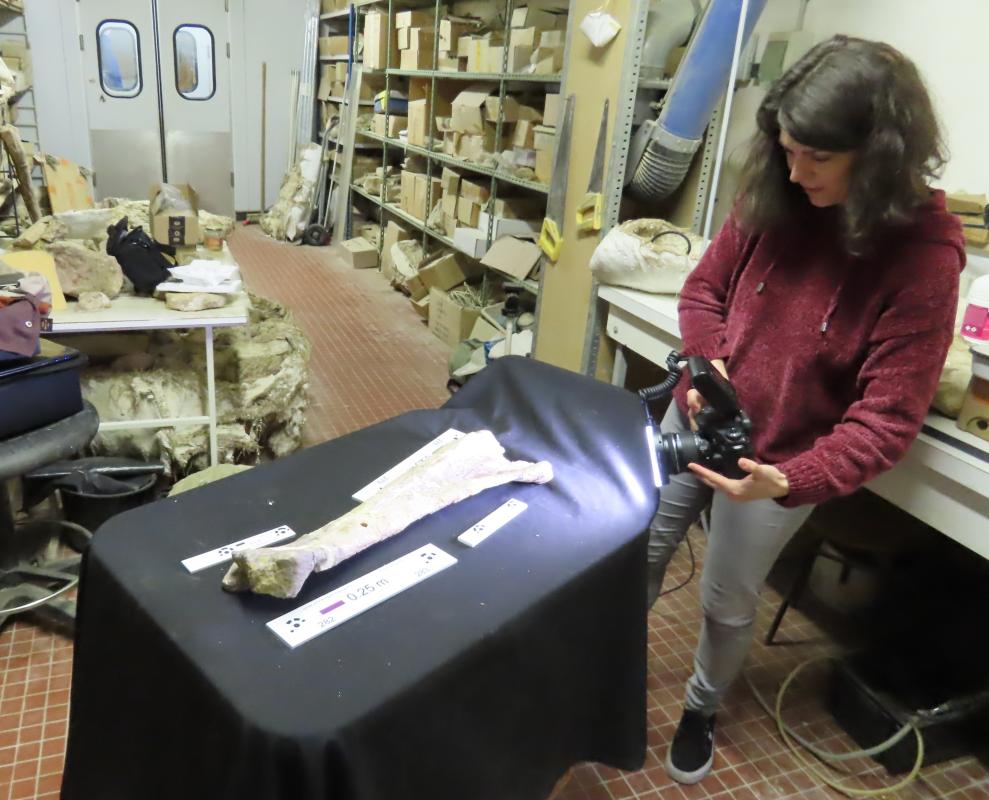Herbivorous dinosaurs of the sauropod group were the largest land animals to ever inhabit the earth. Weighing up to 100 tons, they dwarf some of the largest whale species alive today with their body mass. They lived about 228 million years ago and became extinct at the end of the Cretaceous period about 66 million years ago. For scientists, the sauropods are particularly exciting because of their body structure and the great diversity of species. Despite numerous fossilized finds and extensive research, it is still unclear how these gigantic dinosaurs were able to move.
Based on earlier bone finds and fossilized imprints, it is known that the sauropods were four-legged dinosaurs characterized by a long tail and a relatively small head. However, previous research does not allow clear conclusions about tail anatomy and track width, so the body posture and locomotion of the sauropods cannot be unequivocally proven. Dr. Veronica Diez-Diaz, a scientist at the Museum für Naturkunde Berlin, has therefore set the goal of clarifying these unanswered questions by using state-of-the-art methods and describing the body posture and locomotion of sauropods for the first time.
This DFG-funded project will use state-of-the-art technologies such as 3D digitization to develop detailed 3D models of the skeleton and musculature for the hind legs and tail of four well-known sauropod species. This will be complemented by computer-based approaches to musculoskeletal simulation that will allow us to reconstruct posture and locomotion. Two existing hypotheses will be tested:
- Is track width related to hind leg anatomy?
- Does the tail have an important role in locomotion?
In addition, complex computational analyses will be developed to compare for the first time the locomotor patterns associated with track widths with fossilized walking tracks.
This will contribute to the methodological advancement of the exploration and elucidation of fossil running tracks.
Publications
- Vidal, D., and Díez Díaz, V. 2017. Reconstructing hypothetical sauropod tails by means of 3D digitization: Lirainosaurus astibiae as case study. Journal of Iberian Geology 43(2): 293-305.
- [OA] Díez Díaz, V., Demuth, O.E., Schwarz, D., and Mallison, H. 2020. The tail of the sauropod Giraffatitan brancai: digital reconstruction of its epaxial and hypaxial musculature, and its implications for tail biomechanics. Frontiers in Earth Science – Paleontology 8: 160. DOI: 10.3389/feart.2020.00160
- [OA] Díez Díaz, V., Mallison, H., Asbach, P., Schwarz, D., and Blanco, A. 2021. Comparing surface digitization techniques in palaeontology using visual perceptual metrics and distance computations between 3D meshes. Palaeontology. DOI: 10.1111/pala.12518
- Meso, J.G., Quin, Z., Pittman, M., Canale, J.I., Salgado, L., and Díez Díaz, V. 2021. Tail anatomy of the Alvarezsauria (Theropoda, Coelurosauria), and its functional and behavioural implications. Cretaceous Research 124, 104830.
